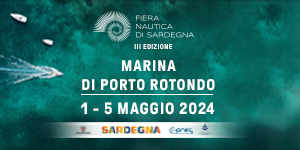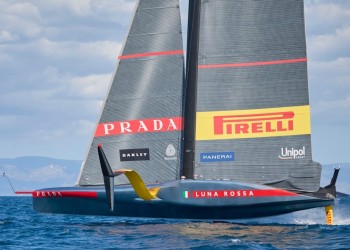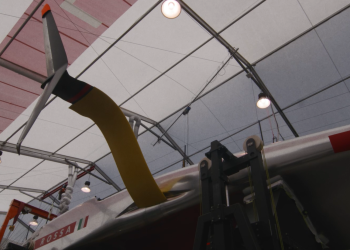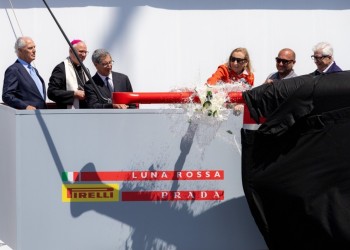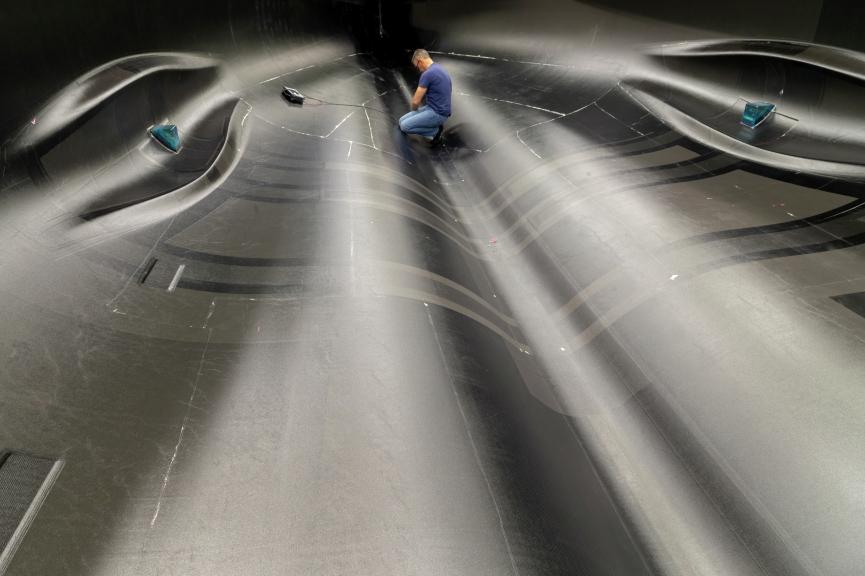
The design and construction of the AC75
Focus on the design and construction of the AC75 Luna Rossa
The new-born AC75 America’s Cup class yachts, designed to compete in the 36th America’s Cup presented by Prada, are an extremely innovative project and an exciting challenge for designers and sailors. The result: a spectacular boat and breath-taking regattas.
Following the two previous editions - 2013 with flying AC72 catamarans and 2017 with the AC50 catamarans - this competition featured the debut of the AC75, a completely new class. With its revolutionary monohull just over 23 meters long, and two side foils, these new yachts were now capable of sailing above the surface of the water and reaching speeds of over 50 knots.
The designers were called to face a demanding challenge to comply with the new rule and hull concept.
The first issue at hand was related to the balances and forces at play that allow the boat to “fly and be stable” in a straight line.
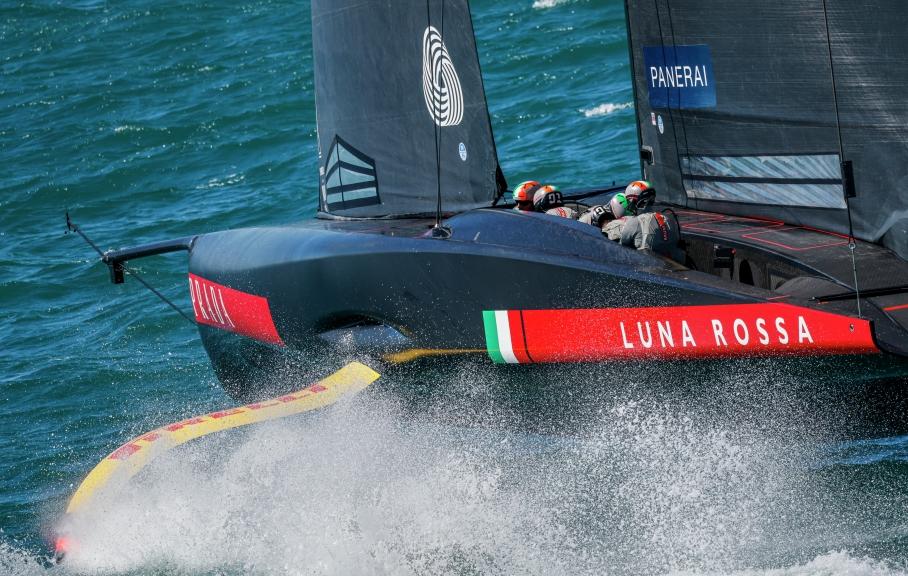
Another important aspect they focused on was manoeuvrability. The engineers had to study the transition phases between one side and the other with extreme care, in order to understand how to make turns and jibes while flying in balance on the foils.
Since the concept of the new class called for a traditional sail plan, as opposed to the wing sail adopted for the catamarans, extensive research was carried out to size the surface of the sails and the mast. Finally, the choice fell on the double mainsail which guarantees greater efficiency and allows for a more contained mast height.
The size and shape of the foil arms have also been the subject of careful study, resulting in the design we see today on the AC75. The front part of the foil is the same for all teams, whereas there is freedom to pursue the shapes of the back area, i.e. the trailing edge.
Next, the Luna Rossa designers worked on optimizing the shape of the hull, creating the most aerodynamic lines possible to obtain a lift on the foils already at low speeds.
Boat 1 and Boat 2 were built in the Persico Marine shipyards in Bergamo, but they were finished and assembled at the Cagliari and Auckland bases.
The mould on which the hull was modelled is made of recycled carbon fiber. The hull, on the other hand, is consists of an aluminium honeycomb core, also used in the aerospace industry, and covered with carbon skins. These elements are glued with epoxy resins and brought to a temperature of about 80 ° C, to favour the chemical crosslinking reaction.
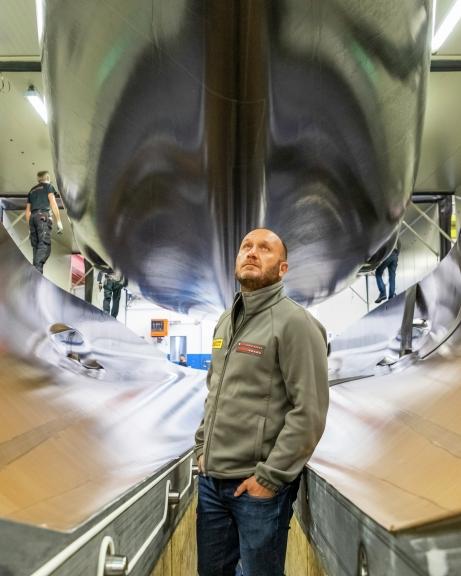
The foil arms instead are made of rigid plates of monolithic carbon, like slices of cake, which are placed side by side and glued together one after the other, modelled with a numerical control machine and, finally, wrapped in a further containment layer in carbon, which is in turn "baked" to consolidate its shape. This part of the foil arm is “one-design” and the same for all teams.
The mast is also made of carbon and is "one-design" in terms of shape. Each team is free to choose the manufacturer and, above all, can decide to reinforce and stiffen it at its discretion, depending on the type of rig and the loads to which it is subjected.
The rudder, on the other hand, is made of carbon and metal. According to the Class Rule, each team can produce a maximum of four pieces.
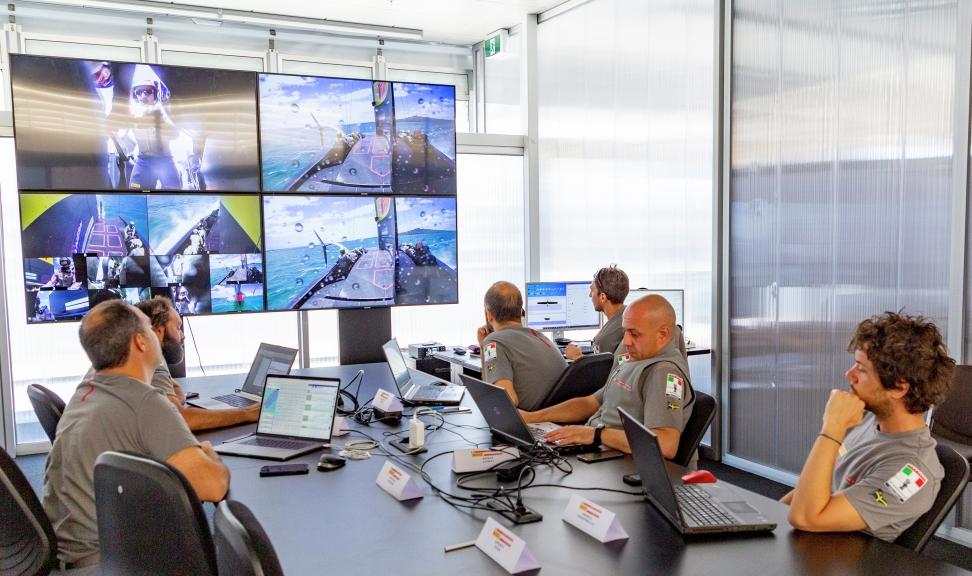
The project was highly innovative, not only in the quest for the most efficient geometries, but also in terms of the sizing of the structures, often modified as the work progressed, in function of the confidence acquired by the crew in the management of this new boat.
To monitor the loads and prevent any structural failures, strain gauges were applied to the internal part of the hull and its components. These sensors calculate the structural deformation in the various parts of the AC75. Also, every time Luna Rossa returned to the shed after an outing at sea, each part was subject to a meticulous exam of the structures and components with specific tools, similar to ultrasounds, capable of identifying any damage or deformation even in the innermost layers of the structure and invisible to the naked eye.
The design of the AC75 is still a very new project. We will certainly see changes in the geometry of both hull and wings, and even more in the development of systems and control methods for sails, rudders and foils. This is also the beauty of the America’s Cup, an exciting and timeless challenge, where the essence of the game is experimentation and innovation.





